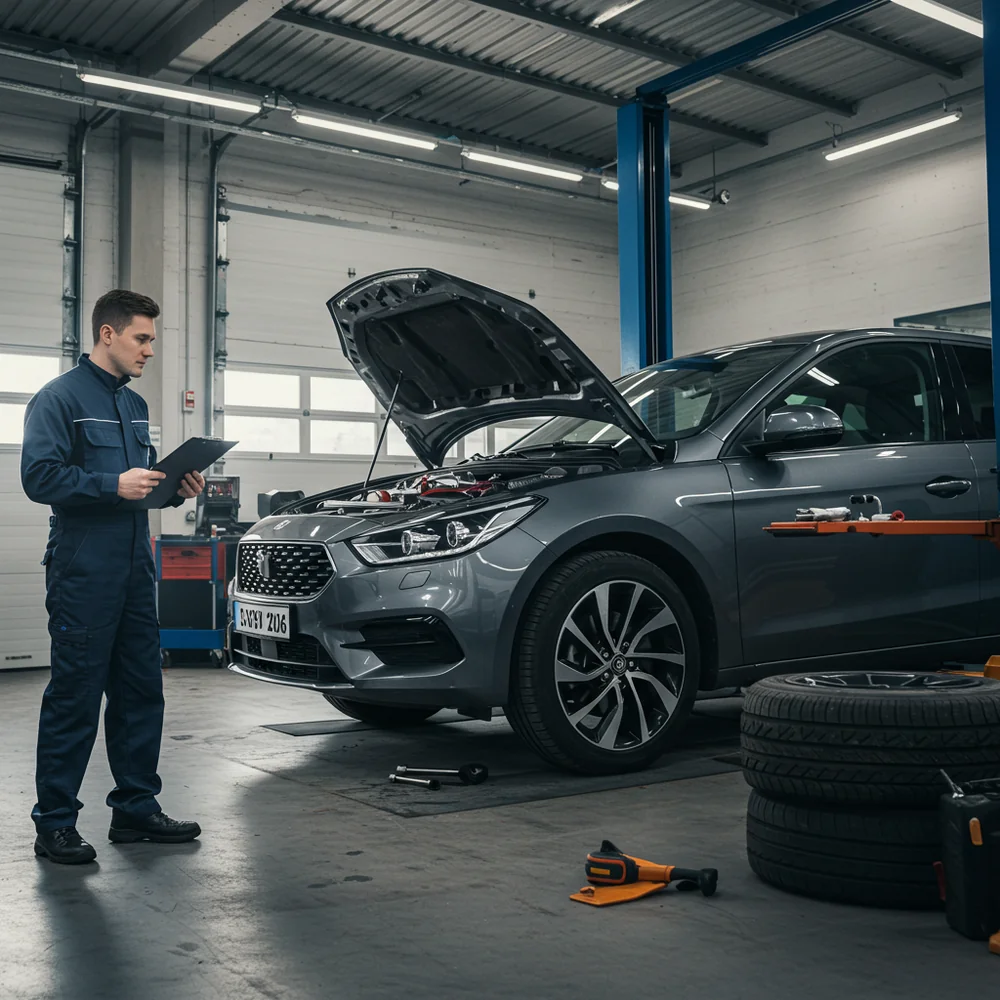
Virginia State Car Inspection Checklist
Virginia State Car Inspection Checklist
Ensure your car meets Virginia’s safety standards with this comprehensive inspection checklist. It includes detailed checks for brakes, tires, lights, steering, mirrors, horn, exhaust, windshield wipers, and seat belts. Following this guide helps you prepare for the official state inspection, avoid penalties, and keep your vehicle safe and roadworthy throughout the year.
1. Inspection Preparation & Documentation
2. Brakes & Parking Brake
3. Lights & Signal Devices
4. Steering & Suspension
5. Tires, Wheels & Rims
6. Mirrors, Horn, & Glass
7. Exhaust, Fuel & Emissions Systems
8. Safety Restraints, Doors & Structure
9. Hood, Engine Bay & Fluid Levels
10. Final Checks & Inspection Outcome
Overall Progress
0% complete
Checklist Progress
0% complete - Ready to download!
Related Checklists
Explore more checklists in the Inspection Checklists category
Forklift Inspection Checklist | Daily Safety Guide
Comprehensive forklift inspection checklist covering all safety and operational aspects including visual inspection, hydraulic systems, brakes, tires, electrical systems, and documentation.
Fire Extinguisher Inspection Checklist: Stay Safe & Complian
Comprehensive fire extinguisher inspection checklist covering location, physical condition, pressure, safety mechanisms, and maintenance requirements.
Pre-Trip Safety Inspection Checklist to Prevent Bre
Comprehensive pre-trip vehicle inspection checklist covering safety, mechanical, and compliance requirements for commercial vehicles.
Apartment Inspection Checklist: Safety, Utilities & Living Areas
Comprehensive apartment inspection covering entryways, electrical, plumbing, safety, and all living areas for rental properties.
Housing Inspection Checklist for Home Safety
Detailed housing inspection checklist covering structure, systems, and safety to ensure property quality and habitability.
Popular Categories
Most downloaded checklist categories
Audit Checklists
Ensure accuracy and compliance with audit checklists for business, finance, and safety. Organized tools for efficient auditing.
Assessment Checklists
Streamline evaluations with detailed assessment checklists. Ensure accuracy, consistency, and efficiency in academic, workplace, and project reviews.
Car Checklists
Find essential car checklists for maintenance, safety, road trips, and inspections. Stay prepared and keep your vehicle in top shape.
Safety Checklists
Stay safe with checklists for workplace, home, and emergency preparedness. Reduce risks and stay ready for any situation.
Home Checklists
Explore home checklists for cleaning, organization, safety, and maintenance. Keep your home efficient, safe, and clutter-free.
Wedding Checklists
Plan your big day with wedding checklists covering planning, budget, guests, and timeline. Stay organized from start to finish.

